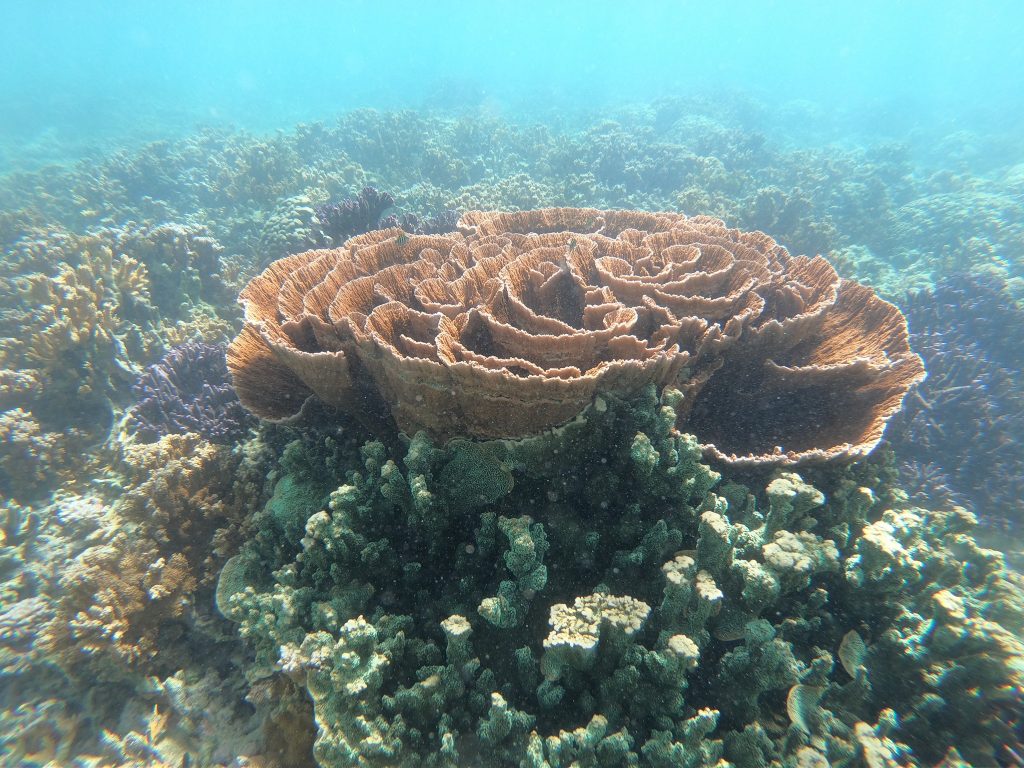Want updates on all Hawaii’s Invasive species? This update from the AIS Team was provided to the Hawaii Invasive Species Council(HISC) as part of their bi-monthly newsletter!

HISC News is a semi-monthly newsletter that provides:
- Recurring updates from active response efforts
- Announcements and programmatic updates from agencies and partners
- Upcoming events. This newsletter is sent to the full HISC email list, and readers can subscribe/unsubscribe at hisc.hawaii.gov
View the full HISC update for August/September HERE.
_______________________________________________
The Hawaiʻi Aquatic Invasive Species field team, with support from numerous community and partner organizations, carefully extracted non-native coral species from patch reefs in O‘ahu’s Kāneʻohe Bay. After receiving the first report of a non-native coral on May 13 from Hiʻilei Kawelo, the Executive Director of Paepae o Heʻeia, samples were collected from three suspected species and submitted to Dr. Robert Toonen, a coral expert at the Hawaiʻi Institute for Marine Biology (HIMB), for genetic analysis. Samples also were sent to a National Oceanic and Atmospheric Administration (NOAA) lab for taxonomic identification. NOAA’s Dr. Doug Fenner identified the orange foliose coral as Montipora foliosa, the purple branch coral as Montipora digitata and the green polyp coral as either Montipora stellata or Monitipora carinita. Bishop Museum also received samples for its collection. AIS team lead, aquatic biologist Kim Fuller explained, “Our team is responsible for rapidly responding to new reports of non-native aquatic species and assessing next steps for management. Non-native species have the potential to become invasive and negatively impact our native ecosystems, the economy and human well-being. It is necessary to respond to non-native species reports in a timely manner before they have time to establish and spread.”
See the full story here: https://dlnr.hawaii.gov/ais/2020/08/05/non-native-corals-removed-from-kane%ca%bbohe-bay/

_______________________________________________
A decade of urchin activity in Kaneʻohe Bay leads to seaweed-free corals as the DAR urchin Hatchery plans 600,000 Urchins to be released in the Bay by End of 2020.
See the full story here: https://dlnr.hawaii.gov/ais/2020/08/05/a-decade-of-urchin-activity-in-kane%ca%bbohe-bay-leads-to-seaweed-free-corals/

_______________________________________________
In August, 2020, the AIS Team resurveyed areas of Bartholomea annulata (the Caribbean Corkscrew Anemone), discovered in January 2019, to track spread and distribution. Following an initial report by Keoki Stender, the AIS Team rapidly responded, collecting samples and photos. The anemone was identified by experts from multiple organizations and confirmed to be the first report of the non-native anemone in Hawaiʻi. The AIS team mapped the distribution and spatial extent throughout 2019, as well as trialing two novel control technologies in partnership with the United States Geological Survey and United States Fish and Wildlife Service. The 2020 resurvey was to track the further spread and showed little to no difference in distribution within the past year.

_______________________________________________
Division of Aquatic Resources’ (DAR) Aquatic Invasive Species (AIS) Team retrieved the second of twenty autonomous reef monitoring structures (ARMS) that were deployed throughout the main Hawaiian Islands in July of 2018. ARMS were placed in commercial harbors that included: Nawiliwili, Kauai; Kahului, Maui; Honolulu, Oahu; Kalaeloa/Barber’s Point, Oahu; Hilo, Big Island. The second ARMS unit was pulled from Barber’s Point Harbor on July 13 and brought to Bishop Museum for processing and organism preservation following a new revised protocol. The AIS team were joined by about 10 volunteers and interns outside and following CDC guidelines for COVID-19 precautions. This was the first time the team sorted, photographed, and tissue sampled live specimens to link genetic data with taxonomic identifications. The team plans to complete sorting the second unit by the end of this month and Bishop Museum will begin taxonomic and genetic analyses.

_______________________________________________
DAR’s Ballast Water and Biofouling (BWBF) Coordinator, Jules Kuo, moved on to a new position, and Aquatic Biologist, Natalie Dunn is the new lead for AIS Prevention.
_______________________________________________
VIDA EPA regulations are expected to be published on the Federal Register any day now. For those interested in submitting public comments, there is a very short turn around time (60 days) from when regulations will be published to when comments must be submitted. In preparation for the comment period, the BWBF team in coordination with CGAPS held an internal DAR VIDA briefing to start building internal awareness and discuss needs.
_______________________________________________
The AIS team will be presenting at this year’s virtual Hawaii Conservation Conference. Presentations will be posted to the AIS team website after the conference has been concluded.